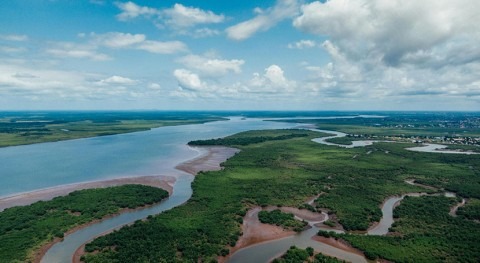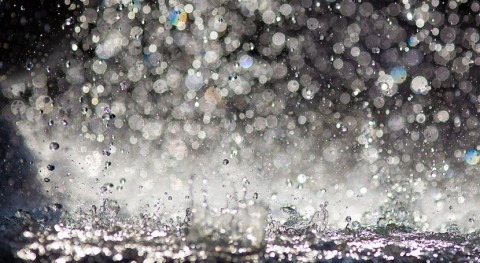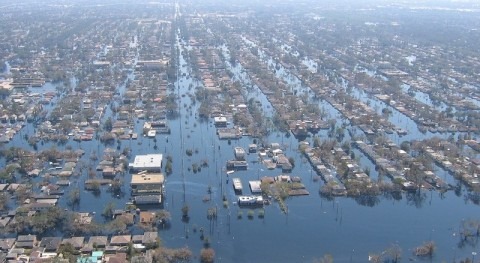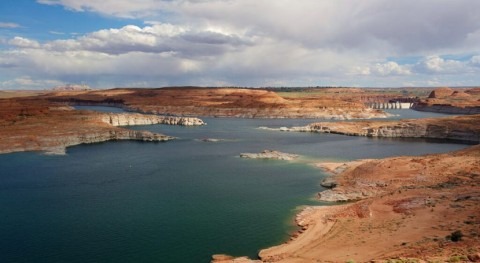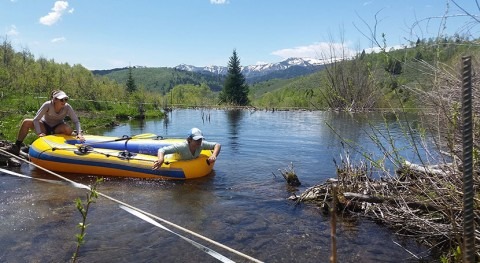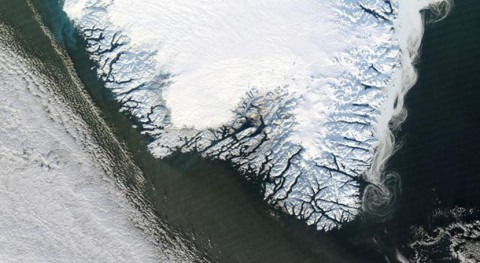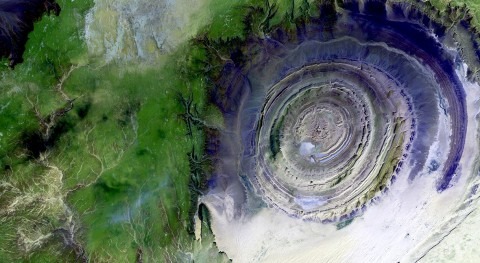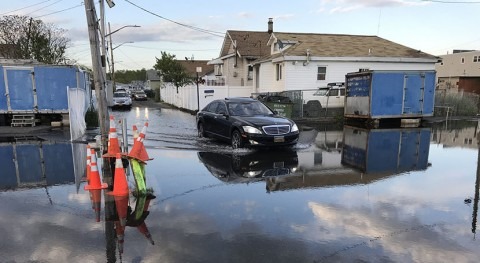Greenhouse gas emissions from the world’s water reservoirs are around 29% higher, per area, than suggested by previous studies, but practical measures could be taken to help reduce that impact, a new study finds.
Much of the increase in emissions comes from previously unaccounted for methane degassing, a process where methane passes through a dam and bubbles up downstream, according to the new study published in Global Biogeochemical Cycles, AGU’s journal investigating the global cycling of chemical elements important for life on Earth.
The new study is the first to include methane degassing in its estimate of global greenhouse gas emissions from manmade reservoirs. Decomposing plant matter near the bottom of reservoirs fuels the production of methane, a greenhouse gas that is 34 times more potent than carbon dioxide over the course of a century and comparable to rice paddies or biomass burning in terms of overall emissions.
Overall, the researchers found the world’s water reservoirs are annually producing methane, carbon dioxide, and other greenhouses gases in an amount roughly equivalent to 1.07 gigatons of carbon dioxide.
While that amount is small in comparison to the more than 36 gigatons of greenhouse gas emissions produced by fossil fuels and other industrial sources each year, it’s still more greenhouse gas than the entire country of Germany, the globe’s sixth largest emitter, produces in a year. It is also roughly equal in weight to 10,000 fully loaded U.S. aircraft carriers.
“While a number of papers have pointed out the importance of aquatic systems as sources of methane to the atmosphere, this is the first paper that I know of to look explicitly at which kinds of reservoirs are big sources and why,” said John Harrison, a professor in the Washington State University Vancouver School of the Environment and lead author of the new study. “It gives us the ability to start working toward understanding what we could do about methane emissions from these types of systems.”
In addition to addressing methane specifically, the research team factored in numerous other unaccounted for variables into their analysis such as water temperature, water depth and the amount of sediment entering into thousands of different reservoirs located around the world. Previous studies calculated overall greenhouse gas emissions from reservoirs, relying solely on average emission rates per reservoir surface area.
Harrison and colleagues found methane degassing accounts for roughly 40% of emissions from water reservoirs. This large increase in previously unaccounted for emissions was partly offset by a projected lower amount of methane diffusing off the surface of reservoirs, according to the analysis. Carbon dioxide emissions were similar to those reported in past work.
Mitigation possible
The researchers’ findings reveal the highest rates of greenhouse gas emissions from reservoirs occur in the tropics and subtropics. An estimated 83% of methane emissions occurred within tropical climate zones.
These areas are also where the majority of ongoing and planned new reservoir construction projects are anticipated to occur in coming decades.

The highest rates of greenhouse gas emissions from reservoirs occur in the tropics and subtropics, where the majority of ongoing and planned new reservoir construction projects are anticipated to occur in coming decades.
Colors indicate the average amount of carbon dioxide and methane emitted per square area of reservoir per year, from low (blue) to high (red). Peaks on the right panel show the latitudes with highest yearly emissions. From figure 3 of the new study.
Credit: AGU
The findings are particularly important because it may be possible to reduce methane emissions downstream from reservoirs by selectively withdrawing water from near the reservoirs’ surface, which tend to be methane-poor rather than from greater depths, where methane often accumulates.
For example, in a related study, a simulated decrease in water withdrawal depth by as little as 3 meters (about 10 feet) yielded a 92% reduction in methane degassing emissions from a Malaysian reservoir.
“We aren’t saying that reservoirs are necessarily bad. Many provide important services like electrical power, flood control, navigation and water,” Harrison said. “Rather, we want to bring attention to a source of greenhouse gas emissions that we think can be reduced in the years ahead as we work towards carbon neutral emissions.”
Harrison’s and colleagues work recently helped lead the Intergovernmental Panel on Climate Change, the leading international authority on the subject of global warming, to recognize reservoirs and flooded lands as an integral part of each country’s overall emissions.
“We’re interested in using this work to improve these models and global estimates,” Harrison said. “One end goal of this work is to improve our ability to estimate the amount of greenhouse gases coming from reservoirs on a per country basis so that countries can address this source and include it in the way that they are managing their greenhouse gas liabilities.”




